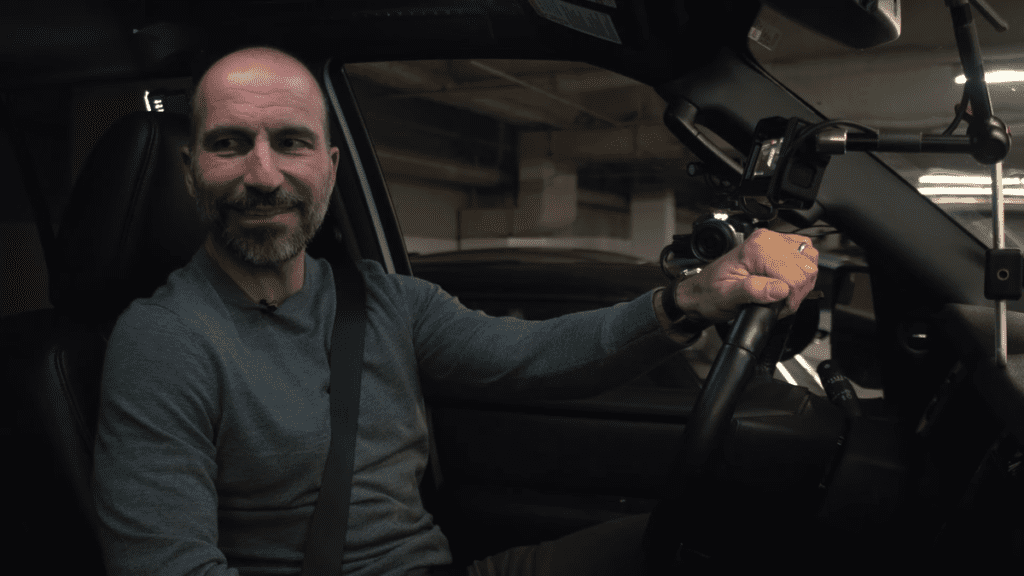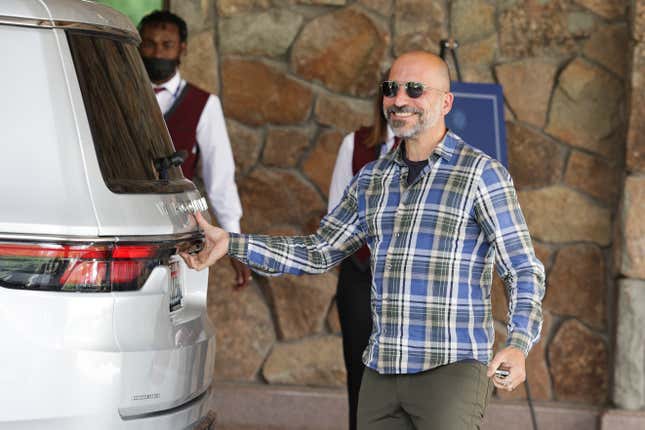Uber CEO Became an Uber Driver To See What Drivers Really Go Through

Uber CEO Dara Khosrowshahi was under pressure to boost the ride-hailing app’s revenue in the wake of the global pandemic, which brought the overall economy in the U.S. to a screeching halt, but boosted the gig economy to such a degree that Uber could not meet user demand. Uber needed more drivers, and fast, but the company’s resistance to classify drivers as workers and a spate of grievances related to the Uber app’s infamously bad design — for drivers, that is — was holding it back.
The Ford Flex Was So Unexpectedly Cool
In case you missed it:
The tech company’s CEO concluded the best way to solve Uber’s driver-related issues was to get behind the wheel of a car and become an Uber driver himself, as the Wall Street Journal reports in a lengthy profile of the “undercover boss.” Khosrowshahi reportedly bought a used Tesla Model Y in a very safe, but very boring, gray paint finish, and ferried riders around San Francisco (out of which Uber is based) for months under the alias “Dave K.”
Khosrowshahi started picking up fares in September of 2022 as part of an ongoing campaign called “Project Boomerang,” which aimed to improve Uber for its drivers rather than riders, and therefore entice more people to start driving for the service. It’s not just about a premium experience exclusively for riders, but for drivers, too.
But the start was far from premium for Khosrowshahi, who struggled to navigate Uber’s sign-up process, and later had his hopes of receiving generous tips dashed by the common practice of “tip baiting.” The Uber app punished the CEO for rejecting certain fares, and its clunky interface made navigating and transitioning from one fare to the next difficult.
G/O Media may get a commission
HEALTHIER HAIR
Augustinus Bader Hair Revitalizing Complex
Improve your hair today
The Hair Revitalizing Complex was tested via double blind trial to compare those taking it to those on a placebo. Those on the supplement were found to have increased their hair count by 56%, hair shine by 100%, and a 98% reduction in hair damage when compared to those taking the placebo. If these are the results you’re looking for, you can get a one-month supply (30 days) for just $130.
In other words, the app sucks for drivers. Khosrowshahi’s driving also showed him what it’s like to be at the mercy of rider reviews, per the WSJ:
One passenger recognized the Uber CEO and asked for advice on his startup. Mr.Khosrowshahi said most riders haven’t recognized him, though, and have collectively given him a five-star rating. He said he gets nervous the nights before he drives, out of concern thathis rating might dip the next day.
But the WSJ says that the CEO’s months-long experience, culminating in only 100 rides and deliveries, has prompted the company’s biggest makeover since 2009. The company’s yearly results profited, too, with Uber reporting higher revenue and profit in 2022 than previous years.
Funny that it would take the Uber CEO and a handful of other executives getting behind the wheel, and experiencing the technical difficulties and stresses drivers face first-hand (as well as the rudeness of Uber riders) to change things.
I encourage you to go read the entire WSJ profile, because it’s about as close to a benign parable about the tech industry as we can probably get — especially when it’s about the CEO of a company like Uber, which has been at odds with its drivers (ahem, workers) for years.
The experiment is far from perfect, and is hardly representative of what the average Uber driver (who doesn’t happen to moonlight as the CEO of a major tech firm) will go through. At one point, for example, the WSJ says the CEO swore to never again pick up a fare that would take him across the Bay Bridge to Oakland during rush hour. How many Uber drivers can say the same without facing some sort of monetary loss?
But, at least, the profile shows how doing things that benefit the people who actually do most of the work can have positive effects on a company’s bottom line. Rather than trickle down this is trickle up economics at work.
The changes to the app that the CEO’s driving days yielded are getting praise from drivers who’d been asking for similar changes and more transparency in their pay for a long time. Now, then, maybe let’s get these slightly happier Uber drivers some substantial benefits, and not just app updates or UI patches.

Photo: Kevin Dietsch (Getty Images)



